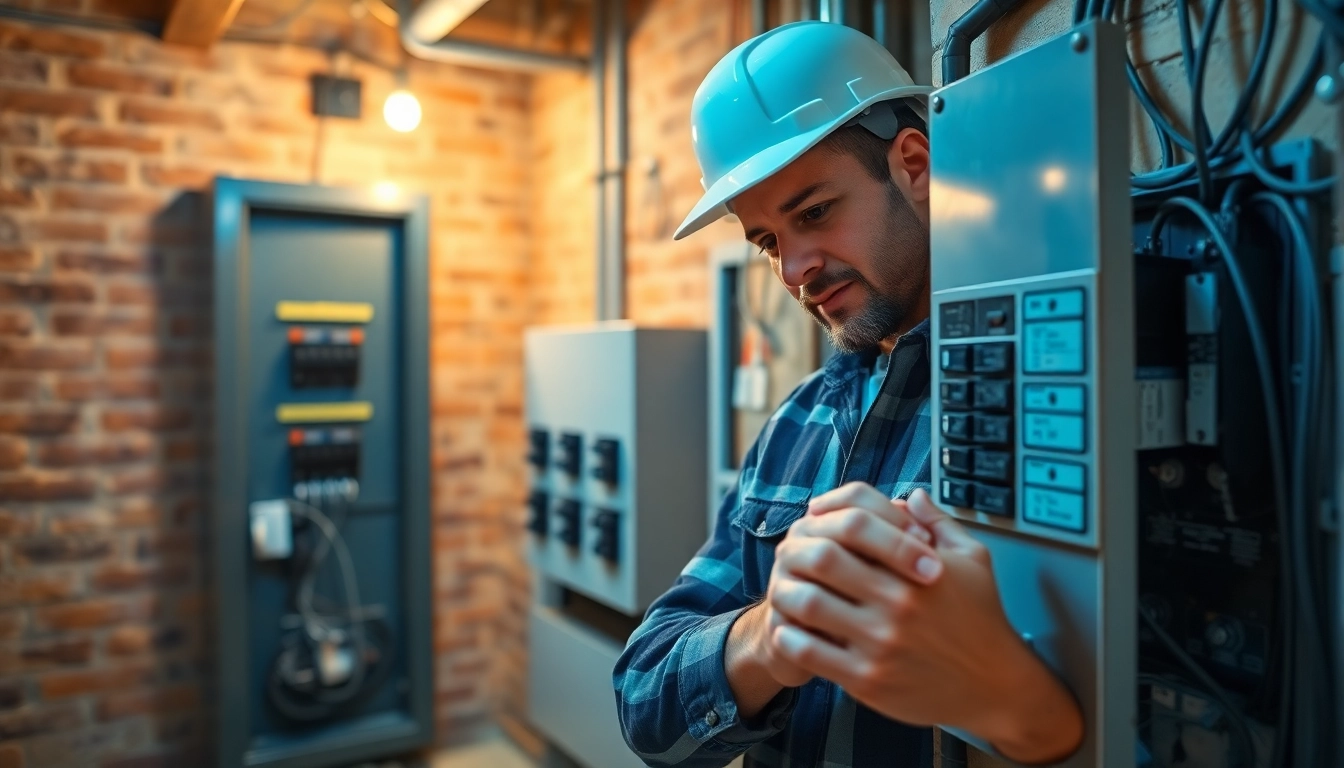Understanding Electrical Panels and Their Functions
Electrical panels are an essential component of any home, responsible for distributing electrical power throughout the house. These panels serve as the main control panel that connects the electrical grid to the internal wiring of a house, enabling the safe and efficient use of electricity. Understanding the purpose and function of electrical panels is vital for homeowners, particularly when considering an Electrical Panel Upgrade.
What is an Electrical Panel?
An electrical panel, also known as a breaker panel or service panel, is a flat, metal box installed in homes that houses circuit breakers or fuses. These breakers serve as safety devices that automatically shut off the electricity during overload or short circuits, preventing potential electrical fires and appliance damage. Essentially, the panel acts as the lead hub for all electrical circuits within the home, ensuring orderly distribution to outlets, lighting, and appliances.
Key Components of Electrical Panels
Understanding the key components of electrical panels helps illuminate their functionality:
- Main Breaker: This is the switch that controls power to the entire panel, allowing the user to disconnect all electrical service at once for maintenance or emergencies.
- Circuit Breakers: These devices protect individual circuits. When the electrical load exceeds safe levels, the circuit breaker “trips,” cutting off the electrical flow.
- Bus Bars: Conductive bars that distribute electricity from the main breaker to the various circuit breakers.
- Grounding System: This system connects to the ground, providing a path for electrical faults to prevent electric shocks.
How Electrical Panels Ensure Home Safety
Electrical panels are designed to ensure safety in several crucial ways. First, circuit breakers automatically disconnect power when current overloads occur, minimizing the risk of electrical fires. Furthermore, modern panels are built to comply with national safety standards, which mandate various safety features. Regular inspections and upgrades of electrical panels can enhance home safety and mitigate risks associated with aging wiring or outdated components.
Signs You Need an Electrical Panel Upgrade
Recognizing when to upgrade your electrical panel is essential for maintaining electrical safety and efficiency. Here are some critical signs that indicate the need for an upgrade:
Increased Electrical Load Requirements
As households expand and modern appliances consume more electricity, the demand on electrical panels increases. If you’ve recently added significant electrical loads such as home theaters, electric vehicles, or high-power appliances, your existing panel may not be able to handle additional demand, necessitating an upgrade.
Frequent Circuit Breaker Tripping
Experiencing frequent tripping of circuit breakers is a telltale sign that your electrical panel is overwhelmed. While circuit breakers are designed to trip when they detect overloading, persistent interruptions can indicate that your electrical panel is insufficient for your home’s current requirements, warranting a replacement.
Outdated Equipment and Safety Standards
If your electrical panel is more than 20 years old, it may not meet today’s safety standards. Old panels can pose serious risks, including inadequate overload protection and limited power distribution capabilities. Upgrading to a modern panel not only enhances safety but also ensures compliance with current electrical codes.
Benefits of Upgrading Your Electrical Panel
Investing in an electrical panel upgrade comes with various advantages. Understanding these benefits can help homeowners make informed decisions:
Enhanced Safety and Compliance
Modern electrical panels are designed with the latest safety standards and regulations in mind. Upgrading ensures that your home complies with local codes and minimizes the risk of electrical hazards, including fires and electrocution.
Improved Energy Efficiency and Cost Savings
Newer electrical panels come equipped with advanced technologies that optimize energy use, making your home more energy-efficient. This efficiency translates to potential savings on utility bills as energy is used more effectively, leading to lower monthly costs and reduced environmental impact.
Expanded Power Capacity for Modern Living
With the rise of smart home technology and the growing trend of electric vehicles, having an electrical panel with a higher amperage rating (e.g., from 100 amps to 200 amps) allows a household to meet increased power demands. This expansion paves the way for future upgrades and the integration of new technologies without the risk of overloading circuit systems.
Steps for a Successful Electrical Panel Upgrade
Upgrading your electrical panel involves careful planning and execution. Follow these steps to ensure a smooth and successful upgrade:
Assessing Your Current Electrical Needs
Begin by evaluating your current energy consumption and future needs. Identify heavy-duty appliances, assess the number of outlets, and consider any planned renovations. This assessment will guide your decision on the appropriate amperage and functionalities required in your new panel.
Choosing the Right Type of Panel and Breakers
Electrical panels come in various types, including main breaker panels, sub-panels, and smart panels. Selecting the right kind depends on your specific needs. Consult an electrician to help determine which panel type will best suit your home and layout.
Hiring Professional Electricians: What to Look For
Engaging a qualified electrician is critical for a successful upgrade. Look for professionals with good references, relevant certifications, and experience in panel upgrades. Discuss your specific needs and ensure they provide a clear scope of work, timeline, and cost estimates before proceeding.
Cost Considerations and Financial Incentives
Understanding the financial implications of an electrical panel upgrade can help homeowners budget appropriately and explore available incentives:
Typical Costs for Electrical Panel Upgrades
The costs to upgrade an electrical panel vary significantly based on several factors, including the type of panel, the extent of the upgrade, and local labor costs. On average, homeowners can expect to spend between $800 and $4,000, with a typical upgrade from 100 to 200 amps costing around $1,300 to $3,000. Consult with your electrician for a detailed estimate tailored to your circumstances.
Understanding Potential Rebates and Tax Credits
Homeowners may qualify for various rebates and tax credits for completing electrical panel upgrades, especially if updating for energy-efficient or electric vehicle-readiness. Programs like ENERGY STAR and local utility rebates may offset upgrade costs. Always check current offerings to maximize savings.
Budgeting for Future Electrical Needs
Consider developing a budget not just for the immediate upgrade but for potential future electrical needs. The increasing reliance on digital technology and energy-efficient solutions implies that future enhancements should also be factored into your current budget, ensuring that your electrical system remains robust for years to come.




